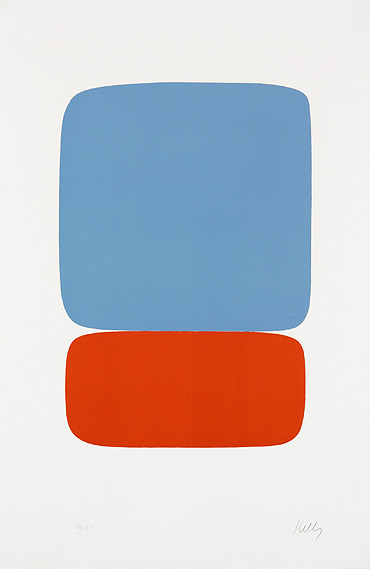
Sunday, January 31, 2010
5) Define the art of this time_2010
What name would you give it?
Nicolas Bourriaud would call it “Altermodernism.” This is the closest title that I have come across that I would ascribe to, assuming that there is a new movement afoot.
When did it begin? How did it begin?
This movement, if it exists, began in 1989 when the Berlin Wall fell and the world began to experience greater communication between its largest entities, both nations and trade. There was also a show (whose name I will insert when remembered/found) that featured contemporary artists from both industrialized nations and non-industrialized nations. This is important because traditional art (often considered craft) was displayed with “high” art. In a way this act symbolized the end of defined movements, which would be a current trend. The 1990’s were also important in the spread of this movement by creating greater information/communication channels.
What are the main principles associated with this Movement?
This movement is largely postmodernism from a global perspective. It is the acceptance of anything as art and the merging of different fields of study. Any person’s experience and background is authentic and each is a product of their environment. Borders are becoming more vague and cultures are merging to create a global view, oppose to a localized one.
Who are the main artists/critics associated with it nd what is the aesthetic character of the Art of today?
Three of the main critics/theorists are Nicolas Bourriud, Hal Foster, and Eleanor Heartney. Some artists include: Mel Chin, Andrea Zittel, Tara Donovan, Walead Beshty, Marcus Coates, Olivia Plender, Seth Price, Yes Men, Rafael Lozano-Hemmer, Rirkrit Tiravanij, Olaf Breuning, and (again) many more. The aesthetic character is, like post-modernism, vague. There is less of a coherent link to the past and more of a vague understanding of the world now. There is a connection to culture, but not an understanding of its history. It is also generally characterized by the mixing of media to the point that there is only a loose connection to a traditional label. This could include breaking the barriers to the extent that a label could be changed to one outside of art (for example science or design).
4) Define the Post-Modern Art Movement
Post-Modernism began in the 1960’s with the emergence of philosophies that supported a shift in ideals. The first real Post-Modern artwork would have been Andy Warhol’s first Campbell’s Soup can paintings in 1962.
When did it end? Did it end?
It is uncertain if it has ended. There are still ideas supported by Post-Modernism that are relevant. It is a possibility that it is just being updated or that it is the movement attached to Modernism and signifies that movement’s death.
What are the main principles associated with the Post-Modern Art Movement?
Post-Modernism is essentially the rejection of everything that Modernism promoted. There is no utopia and no ideal. There is no longer a hierarchy, we are all essentially the same and we all consume the same products. There is no originality.
Who are the main artists/critics associated with it and what is the aesthetic character of Post-Modern Art?
There are many critics and philosophers associated with Post-Modernism, but two significant ones are Arthur Danto and Jean Baudrillard. Some artists associated with the movement include: Marcel Duchamp (way before his time), Bruce Nauman, Richard Tuttle, Eva Hesse, Yoko Ono, John Cage, Robert Rauschenberg, Andy Warhol, Claes Oldenburg, Jim Dine, Jasper Johns, Sol LeWitt, Robert Smithson, Christo and Jeanne-Claude, and many more. The aesthetic character is more vague in this movement. Because Postmodernism is linked to the rejection of Modernist ideals any material/medium goes. This means that the traditional was often mixed with new media or completely discarded.
3) define the Modern Art Movement
When did it begin? How did it begin? When did it end?
Most would say that the Modern Art Movement began with Manet’s Luncheon on the Grass (1862) and ended in the 1970s with the emergence of Post-Modern philosophies. There is a thought, however, that it has not ended. This would suppose that Post-Modernism is actually the end of the Modernism or the thought that Modernism is reemerging (with movements such as revisited/revised/re-imagined Modernism).
What are the main principles associated with the Modern Art Movement?
Modernists are often drawn to some form of abstraction in order to attempt to reach a pure form or an essential ideal. There is a firm purist of a type of perfection, or utopian emotion, feeling, or sense.
Who are the main artists/critics associated with it and what is the aesthetic character of Modern Art?
THE critic most associated with the Modern Art Movement is Clement Greenburg. There are many artists. Some include: Jackson Pollack, Donald Judd, Elsworth Kelly, Pablo Picasso, Marc Chagall, Edouard Manet, Edgar Degas, Claude Monet, Vincent van Gogh, Paul Gauguin, Gustav Klimt, Henri Matisse, Piet Mondrrian, Henry Moore, David Smith, to name only a few. There were so many well-known artists associated with this category that it is exhausting to list them all.

Ellsworth Kelly, Blue Over Orange (IX.18. Blue over Orange), USA, 1964-65, lithograph on Rives BFK paper, 35 h x 23.5 w inches

Jackson Pollock. Autumn Rhythm(Number 30), 1950 Oil on canvas, 8' 9" x 17' 3"(266.7 x 525.8 cm). The Metropolitan Museum of Art, New York.

Édouard Manet (French, 1832-1883), Luncheon on the Grass (Le Déjeuner sur l'herbe), 1863, oil on canvas, 81 x 101 cm, Musée d'Orsay.

PABLO PICASSO: “Les demoiselles d'Avignon”, 1907 - oil on canvas, 243,9 - 233,7 cm. - New York, Museum of Modern Art (MOMA)
Donald Judd, "untitled", 1976. Dia Art Foundation; gift of the Brown Foundation, Photo Bill Jacobson.
Post List (don't believe in 'em all)
Post-independence
Post-movement
Post-race
Post-rock
Post-punk
Post-metal
Post-hardcore
Post-identity
Post-production
Post-minimalism
Post-feminist
Post-structuralism
Post-Islamic
Post-impressionism
Post-communist
Post-colonial
Post-hippie
Post-socialist
Post-911
Post-anarchism
Post-humanism
Post-Marxism
Post-post-minimalism
